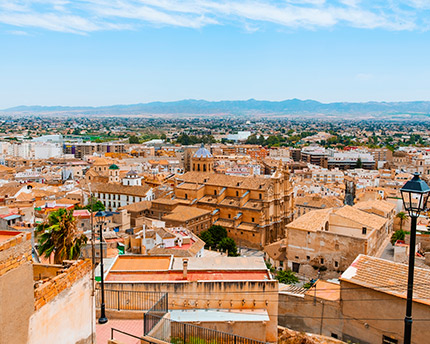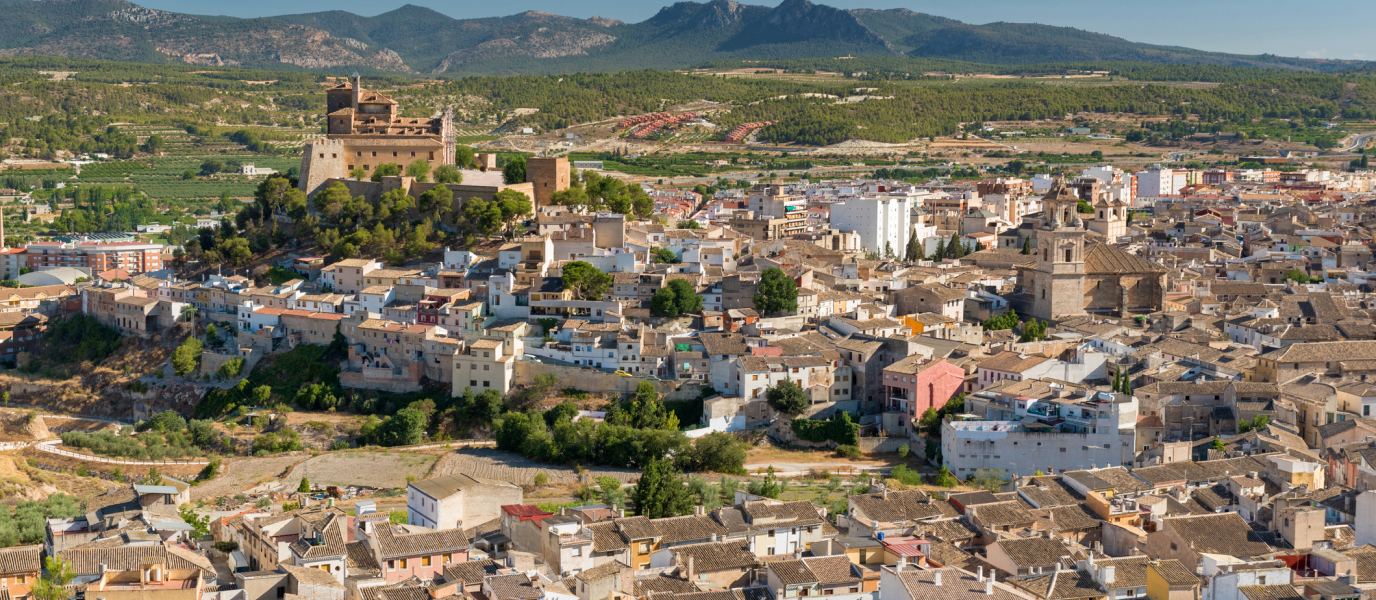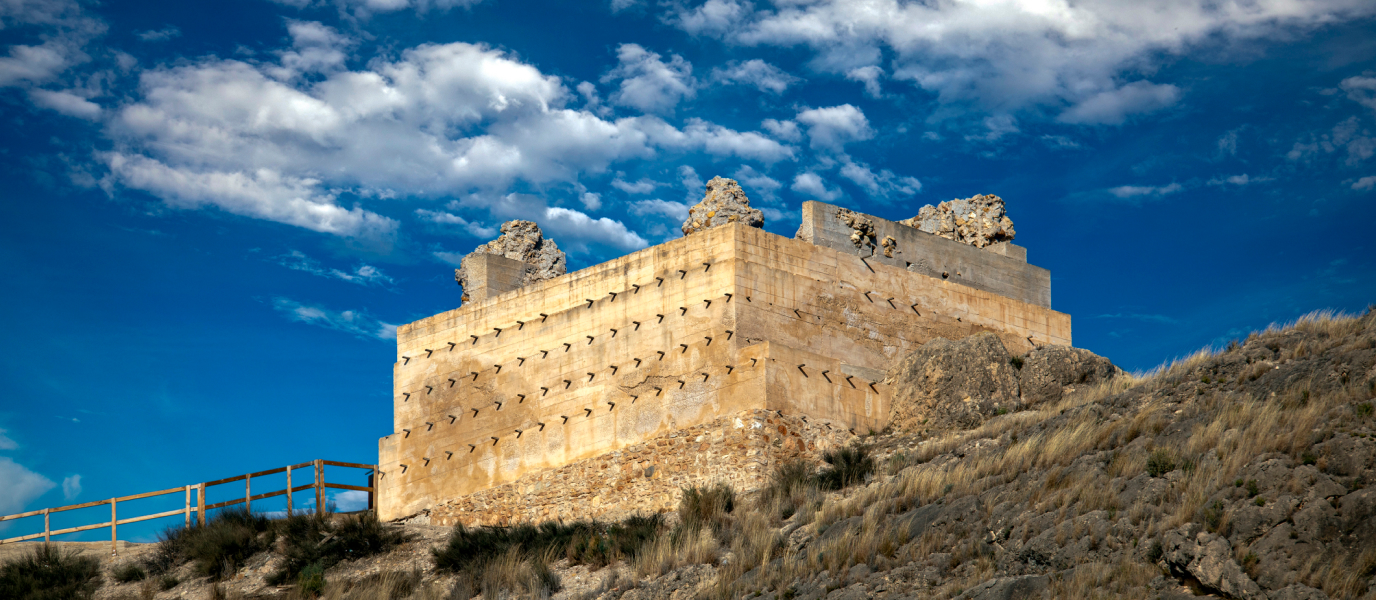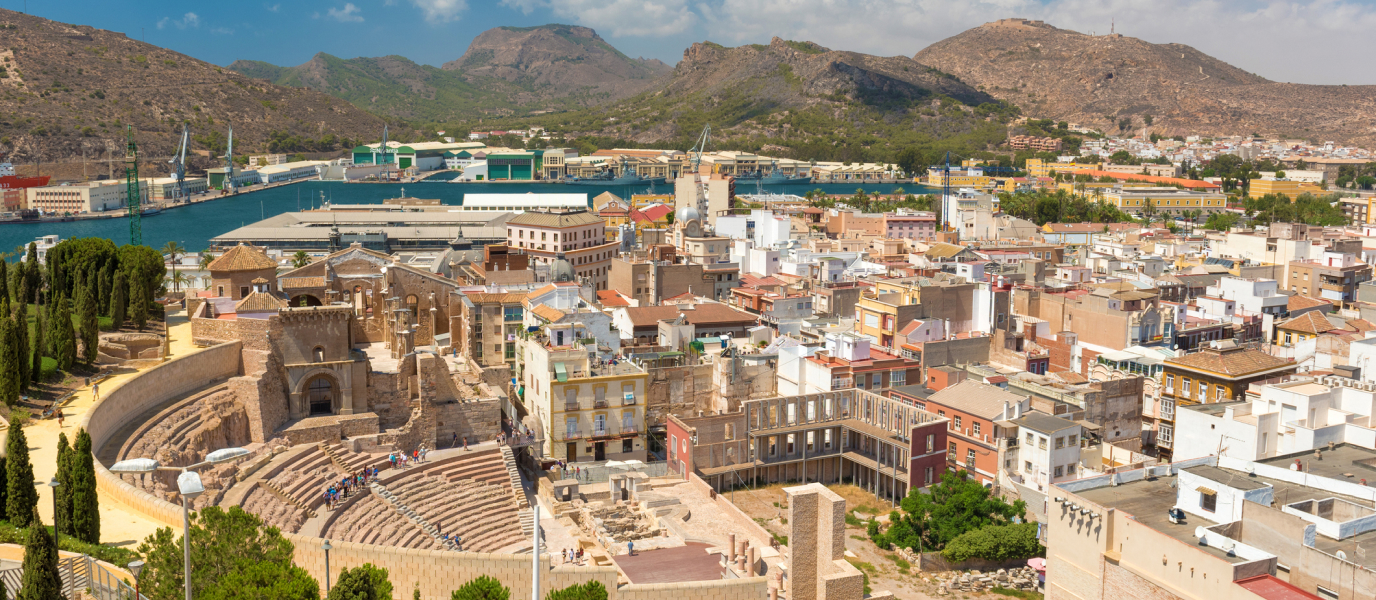Lorca has had many names throughout its history. Its original name in Roman times, Eliocroca, reminds us that Lorca would be the city of light.
Its current name, from Arabic, means ‘battle’ and many people cite it as the point at which the Arabs and Christians waged an important conflict that ended with the conquest of the Iberian Peninsula.
A former mayor also said that it was the ‘city of 100 coats of arms’, because of its extensive heraldic heritage from aristocratic families. Above all, however, Lorca is a place full of magical places as well as heritage, with important traditions such as Holy Week, declared a Festival of International Tourist Interest, where families fragment for a few days to join the white, blue, red, purple or black groups, depending on their brotherhood.
- Lorca Castle
- Old Town
- Collegiate Church of St Patrick
- Casa del Corregidor
- Palacio de Guevara
- Santo Domingo Convent
- Guerra
- Tourist train
- Where to eat in of Lorca
Lorca castle
The Fortaleza del Sol, as this ancient castle is known, is one of the best example of a military complex that was active for almost 900 years. The first records of a defensive structure in the area date back to the tenth century. The castle stood on a hill overlooking the Guadalentín valley, a key crossing point during the Middle Ages between the kingdoms of Castile and Granada. The watchtowers from this period, key to the survival of the complex and of Lorca itself, are still standing.
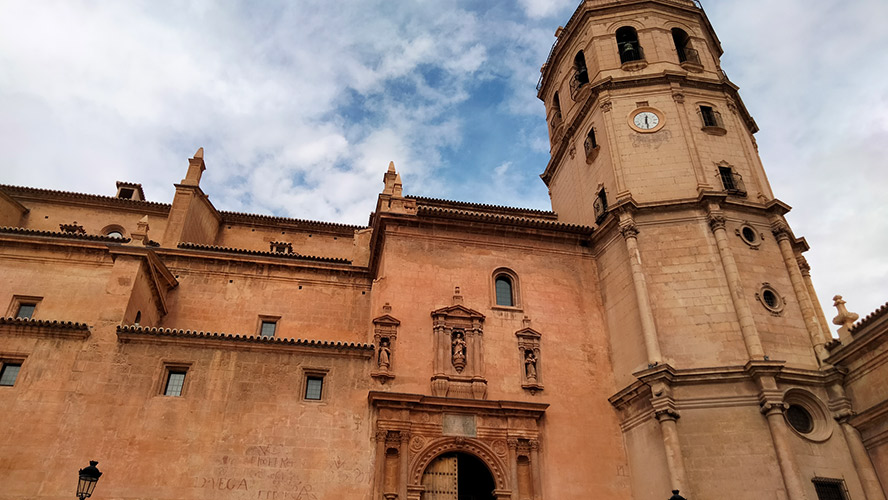
In fact, the fortress was extended and reinforced thanks to the intervention of Alfonso X the Wise, who built more towers, such as the Alfonsina, and part of the walls.
Interestingly, the castle was used until the nineteenth century by the Spanish troops against anyone who challenged the government, and its towers were part of the national defensive communication system before the telegraph was invented.
Inside the fortress you can in fact still see some of the more modern buildings and even the vegetable gardens that the soldiers created to supply themselves with produce.
If you plan on visiting the castle, the best way to get there is by using the tourist train that runs in the high season. Otherwise, bear in mind that the walk there is steep.
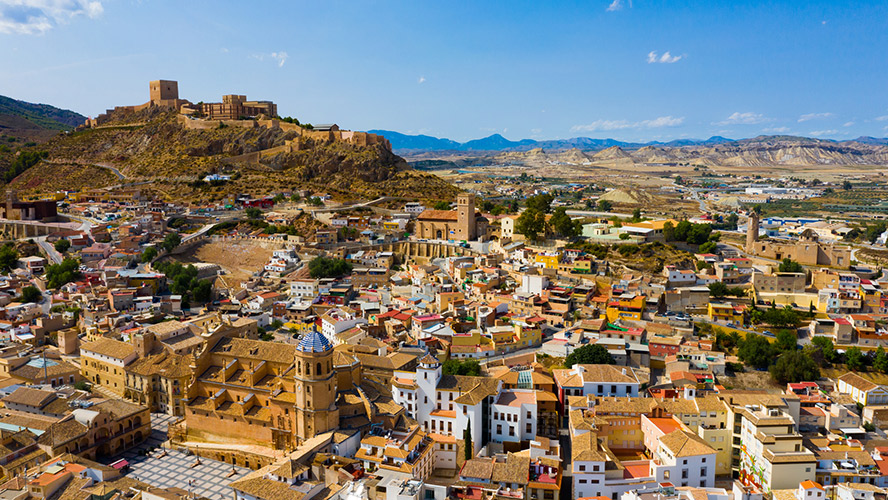
Old town
One of the best ways to discover Lorca is to stroll through its old town, which includes, in addition to the famous Plaza de España, Plaza del Caño or Plaza de la Verdulería (the greengrocer’s square). Just below the castle’s Alfonsina tower is the Jewish quarter, which is very well preserved, since Lorca belongs to the Network of Spanish Jewish Quarters, Paths of Sepharad. In fact, in the area around the castle you can also visit the old synagogue.
Plaza de España
Plaza de España is the nerve centre of Lorca. Built in Renaissance and Baroque style, from the sixteenth to eighteenth centuries, it was once called the Plaza de Afuera (the outside square), because it was located just outside the walled enclosure.
Part of the wall that faced the square was actually destroyed to construct the Collegiate Church of St Patrick, creating the rectangular shape that has remained to this day.
The most emblematic buildings in the town are located on the square, such as the Town Hall, the Collegiate Church of St Patrick and the Casa del Corregidor, which meant all the political and economic powers of the time were concentrated in one place.
Markets and public events were often held here, as it was one of the most open spaces in Lorca.
Collegiate Church of St Patrick
This former collegiate church, the only one in Spain dedicated to St Patrick, is one of the most important buildings in Lorca. Built in Renaissance style between the sixteenth and eighteenth centuries, it was constructed as a symbol of the drive of Lorca’s bourgeois society to rival Murcia’s great cathedral. In fact, its main façade is in Baroque style with classicist touches and is particularly striking when you stand right in front of it.
The collegiate church was dedicated to St Patrick because on 17 March 1452 an important battle was fought in Lorca between the Christian kingdoms and the Muslims, with the followers of the cross prevailing.
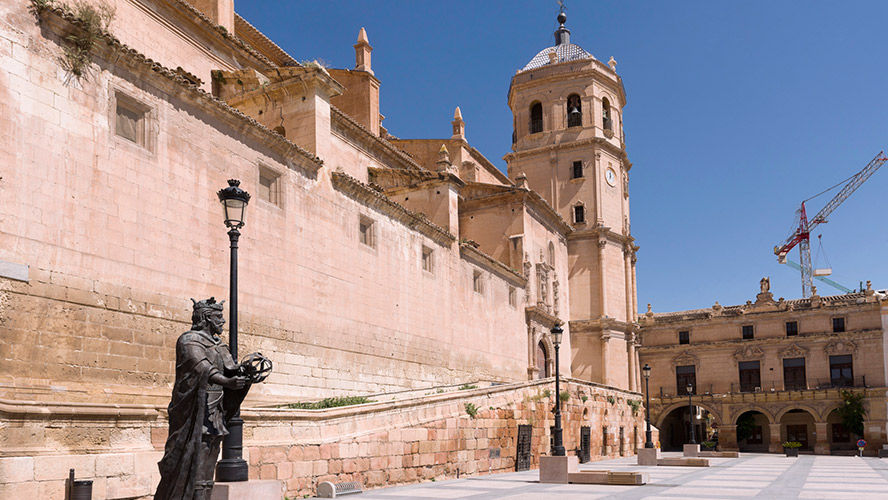
Casa del Corregidor
The Casa del Corregidor, i.e. the palace of the king’s envoy who was in charge, among other things, of dispensing justice in the region, is today, interestingly enough, the seat of the Courts of Lorca. Unfortunately, part of the seventeenth-century building was destroyed and a new one was built in 1979, which has little artistic importance but has retained some of the remains of the former building, such as the arcade on the ground floor and the striking relief featuring two key figures from Lorca’s previous name, the princes Elio and Crota, bearing the coats of arms of the Crown and the city, with a sun between them.
Guevara palace
Another historic building that has been converted into a protected public building is Guevara palace, a seventeenth-century Baroque structure, whose altarpiece-façade with abundant plant motifs and Solomonic columns is well worth visiting. The palace is located in what was, for centuries, the aristocratic quarter of Lorca’s wealthy families and where their palatial homes were built, some details of which can still be seen today.
The building was damaged in 2011 by an earthquake but was completely restored. These days it is a municipal building and its interior courtyard is open to the public.
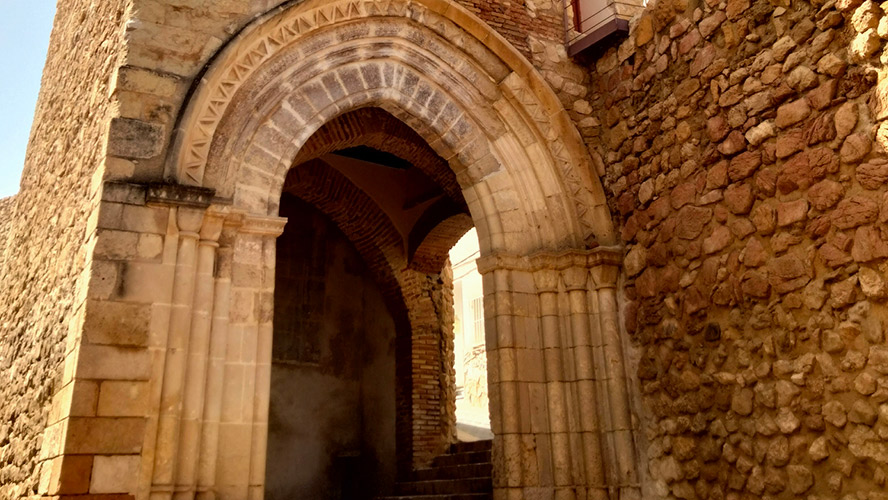
Santo Domingo convent
The complex was built by the Dominicans from the sixteenth century onwards in a style blending the Renaissance and the Baroque. Although at the time it functioned as a convent, these days it is not used as a building for religious worship but as the headquarters of the Illustrious Chapter of Our Lady of the Virgin of Bitterness of the Royal Order-Archconfraternity of Our Lady of the Rosary, i.e one of the main Holy Week brotherhoods also known as the Paso Blanco.
Part of the complex, specifically the church part, has been converted into the Embroidery Museum, one of the little-known wonders of Lorca despite the fact that some of them are listed as BIC (items of cultural heritage) for their beauty and craftsmanship.
The embroideries, in silk and gold, have been made since the sixteenth century and are one of the reasons why the Pasión Lorquina is declared a Festival of International Tourist Interest.
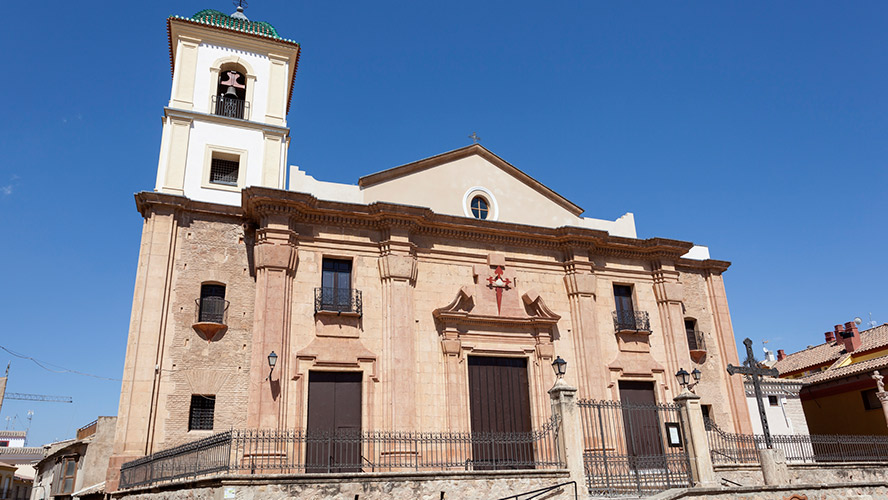
Guerra theatre
Guerra theatre is the oldest theatre still standing in the Murcia region. The building, eclectic in style, was opened in 1861. It has capacity for 581 people and throughout its history it has had to be remodelled several times, the last time being after the earthquake in 2011.
On its façade you can see the busts of four of Spain’s most important playwrights: Tirso de Molina, Lope de Vega, Calderón de la Barca and Moratín.
It is named after the theatre actor Ceferino Guerra.
Tourist train
The tourist train, very similar to those found in some amusement parks, allows you to reach the castle without using up too much energy while enjoy special views of Lorca. Along the way the train goes past some of the most important landmarks in the town and there is an optional guide available, providing explanations about the façades, noble houses and churches that you come upon on the way to the castle.
The route starts on Plaza del Trabajo and ends at the Fortaleza del Sol.
Where to eat in Lorca
The gastronomy in Lorca is another good reason to visit the town. Options include traditional places, such as Ciudad del Sol, which offers quality homemade food, or more sophisticated options, such as the restaurant of the Parador de Lorca, situated in the Fortaleza del Sol. Somewhere in-between the two, Parrilla De San Vicente is a great option.
























































